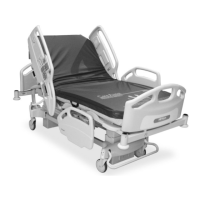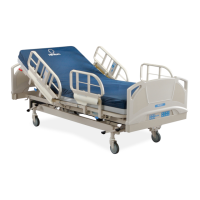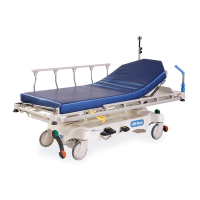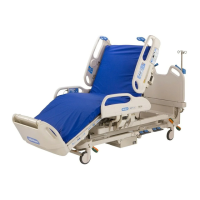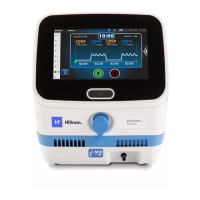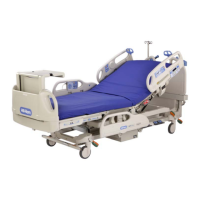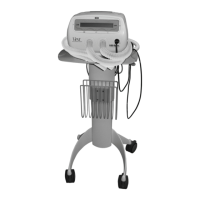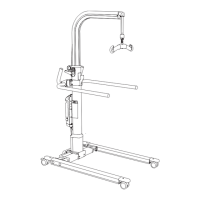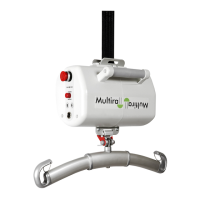Electrical System (B Model and Newer Beds)
Chapter 3: Theory of Operation
CareAssist® and CareAssist® ES Bed Service Manual (MAN330 REV 4) Page 3 - 15
3
Patient pendant or caregiver siderail control unit interfacing
Indication of Bed Not in Low Position (see “Detection of Bed Not in Low
Position” on page 3-9)
Indication of Bed Connected to AC Power but Brakes not Set (see “Detection
of Bed Connected to AC Power but Brakes not Set” on page 3-17)
All of these functions are integrated into a complex programmable logic device
(CPLD).
Patient Pendant
The patient pendant controls operate at 3.3 V DC supplied by the motor control
P.C. board and integrate three main principles:
• Filtering and amplification of inputs for electrostatic protection and signal
formatting
• Multiplexing for the management of the controls
• Demultiplexing for the control of the indicators
Data from the controls and indicators are transmitted in series (link type - SPI)
so as to reduce the number of wires. The clock signal that starts these
exchanges is controlled by the motor control P.C board. All the data is sent in
tens of milliseconds. When the system is in stand-by mode, the power is cut off
and the clock signal is no longer controlled. The battery control is therefore
directly wired so as to have continuous operation.
Motor Characteristics
Table 3-10. Motor Characteristics and Dimensions
Description
Hilow column
motor
Head motor Knee motor Foot motor
Power 96 W (x2) 120 W 84 W 84 W
Voltage 18 to 40 V DC 18 to 40 V DC 18 to 40 V DC 18 to 40 V DC
Intermittent
service
10%
3 min/30 min
10%
2 min/18 min
10%
6 min/60 min
10%
6 min/60 min
Actuator/
column travel
400 mm
± 5 mm (15.75")
239 mm
± 2 mm (9.4")
60 mm
± 2 mm (2.36")
45 mm
± 2 mm (1.77")
Retracted rod/
center distance
445 mm
± 2mm (17.5")
310 mm
± 2mm (12.2")
325 mm
± 2mm (12.8")
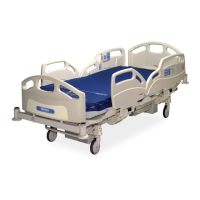
